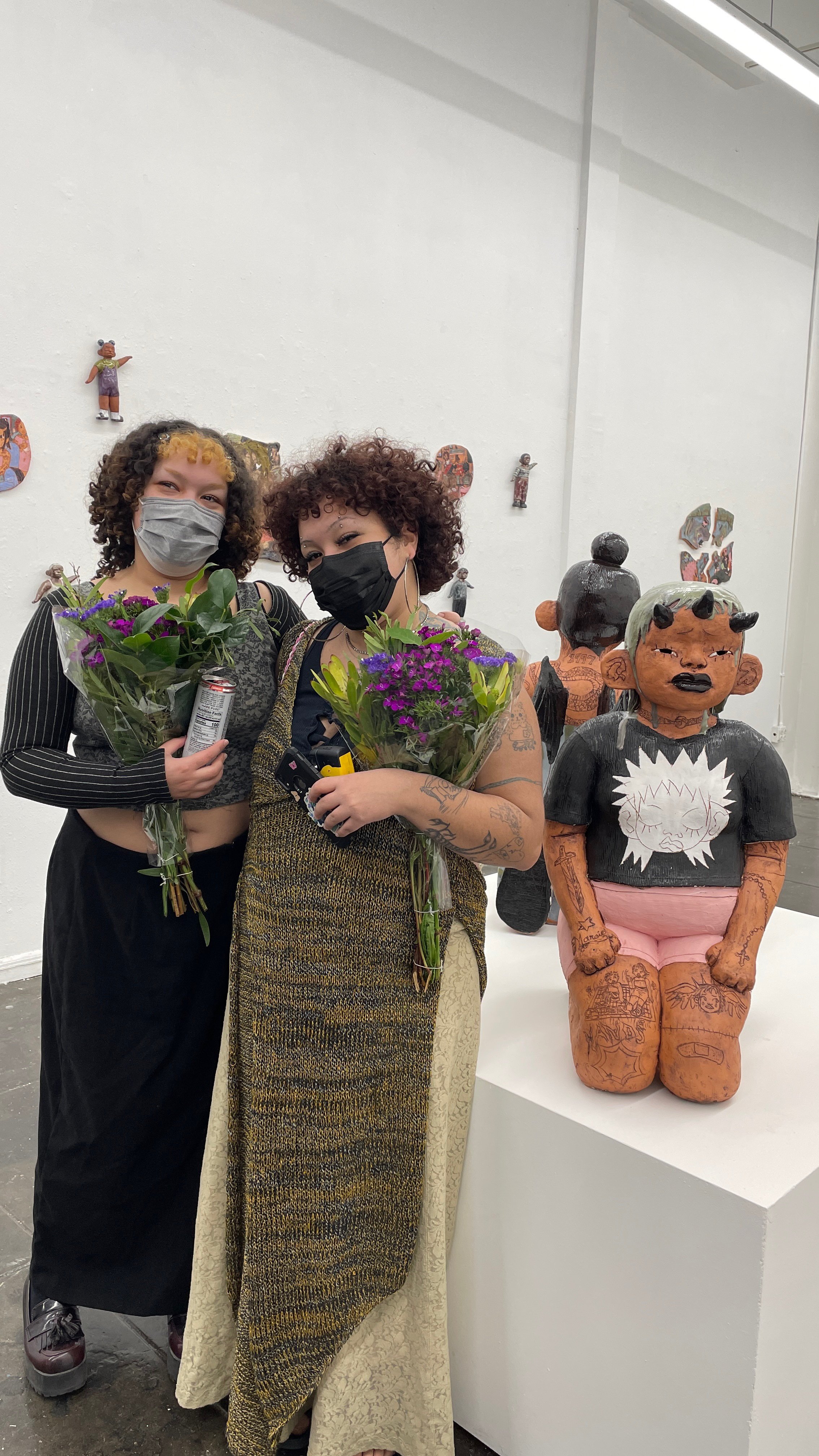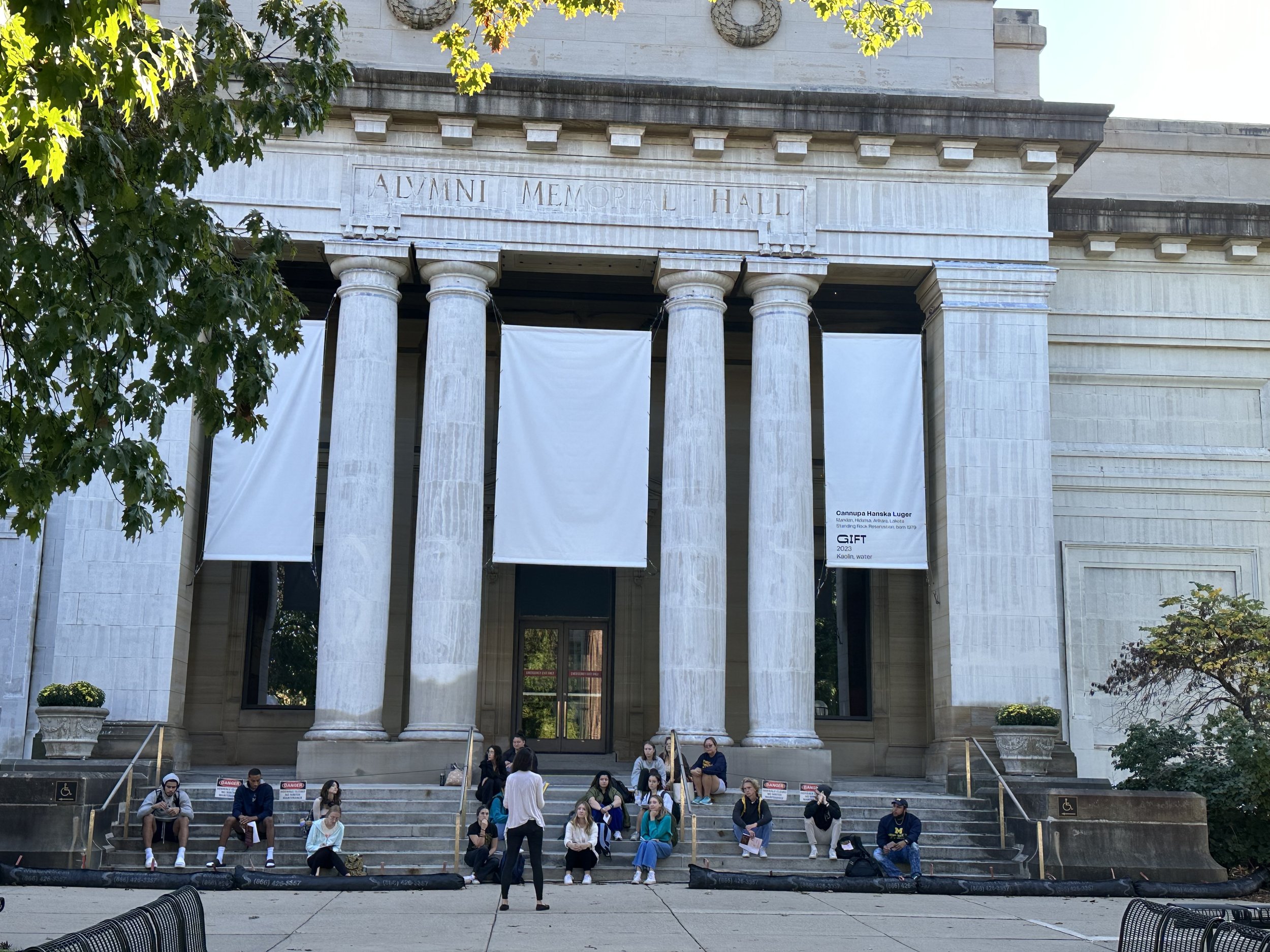Representation, Collaboration & Clay: Conversation with Sydnie & Haylie Jimenez
This summer I had the opportunity to sit down with twin sisters Sydnie and Haylie Jimenez as they rounded out a two year stint at the Archie Bray Foundation for Ceramic Arts. We sat down in The Bray’s library to recap on life and art just a couple weeks before they headed back to Chicago to continue the next chapter in their creative practice. The sisters shared about their upbringing and how growing up with mixed heritage in a mostly white community revealed that art can be a tool for nourishment and survival. They reflected on how in attending the School of The Art Institute of Chicago, they finally found their reflection in the BIPOC student body. And we learn how Sydnie began her clay practice, eventually landing on ceramics by utilizing SIAC’s large kilns. Haylie shares her practice of hand drawn animation, providing her the skills she utilizes today through large scale drawings and works on clay. The artists share how they respectively work with the figure and storytelling, each drawing from identity and representation in an autobiographical nature. The sisters explain how they maintain a practice rooted in DIY culture, making clothes and other accessible pieces as HANDS, along with their more formal artworks. As they round out their journey at The Bray, the sisters reflect on their time in Montana, and we chat about the American clay world and how historically there has been a lack of diversity and representation. We also touch on the gap between the clay and craft markets and the fine art market. We chat about how the sisters inform each other creatively through collaboration while maintaining their own aesthetic and diverse practices - Sydnie produces large scale figurative work and Haylie carves on clay, complimenting her active drawing practice and tattoo trade. As we end our conversation the sisters remind us to take time and nourish our bodies and minds as we push to make space in the world for our communities to thrive creatively.
Sydnie Jimenez (b. Orlando, FL) received a BFA from SAIC (2020) focusing in ceramic sculpture and is a recipient of the Windgate- Lamar Fellowship (2020). Much of her work centers around the representation of black and brown youth in an American context. She illustrates in clay self-expression as a form of protest and self care to protect against a Eurocentric society founded on white supremacy and colonization. Jimenez is currently a long-term resident at Lillstreet Art Center in Chicago.
Born in Orlando and raised in Chattanooga, Haylie later moved to Chicago to attend the School of The Art Institute of Chicago (BFA 2020). Finding Black and Brown Queer community in Chicago and her long lasting relationships with friends and family in Tennessee was and is a pivotal influence for her work which surrounds the importance of belonging, collective care, self expression, and moving through hardships to times of joy together within these communities. She is currently working out of Chicago developing her ceramic and drawing practice, preparing for various shows with her twin sister, Sydnie Jimenez.













